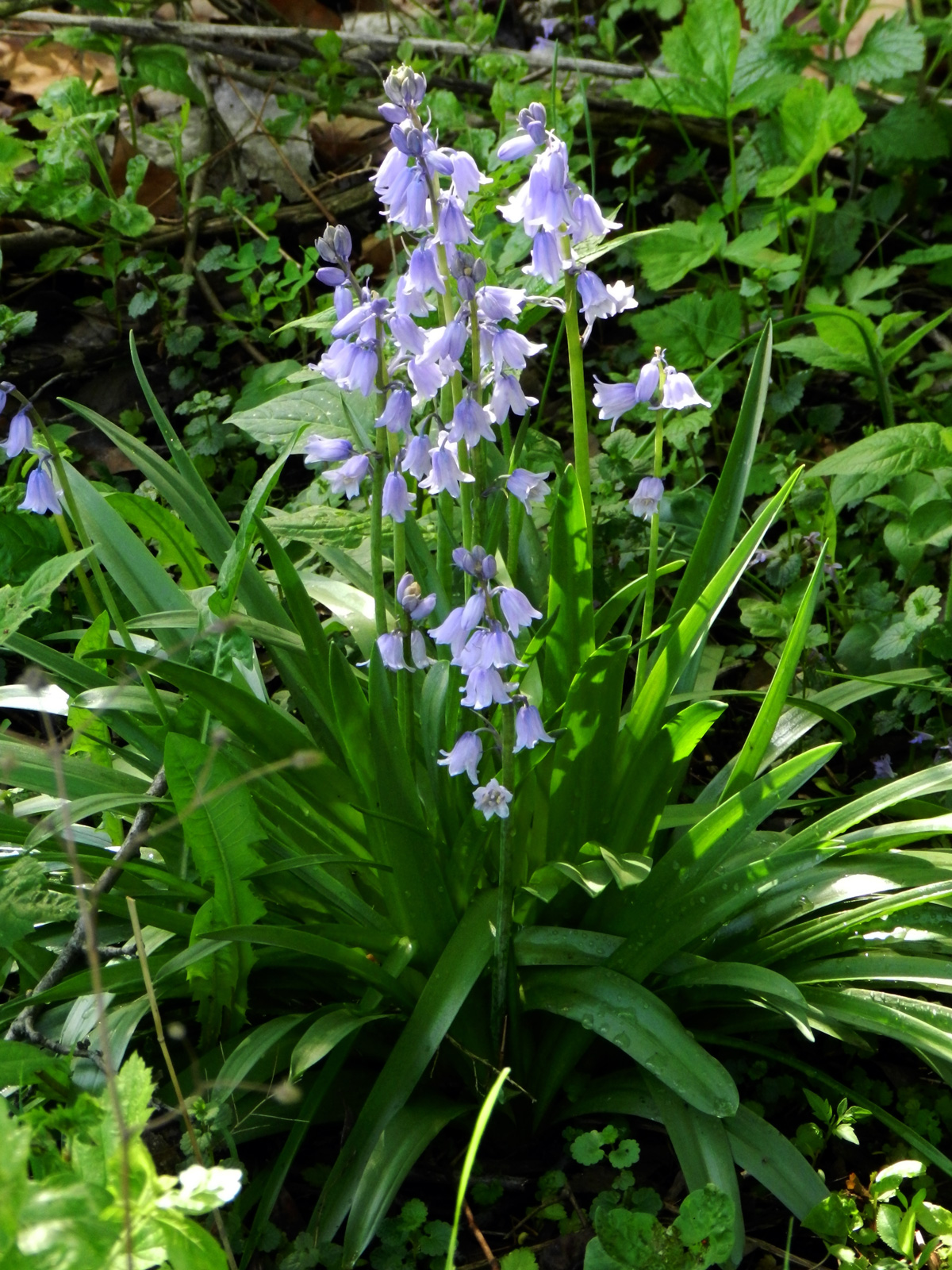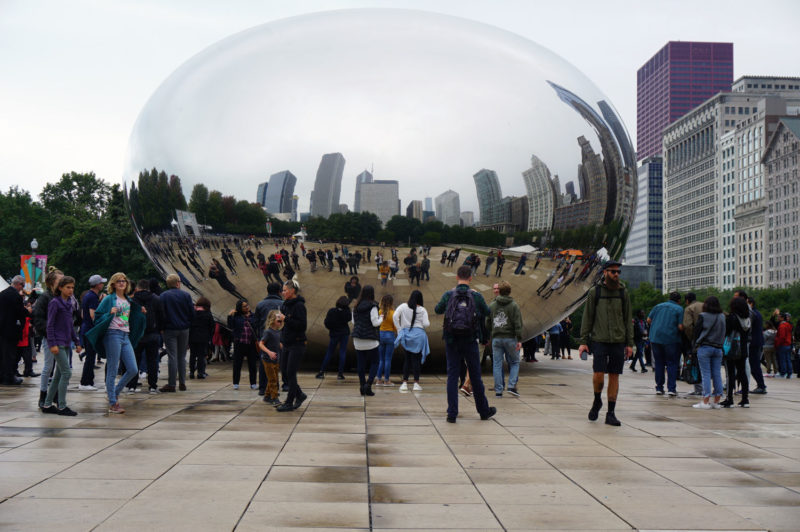
A few days after writing back and forth with several of you about the charm of blue flowers, I happened on a type of blue flower I had never seen, cropping up here and there in the shady, somewhat wild stretch of plantings south of the Peggy Notebaert Nature Museum. The plants were large and handsome. They turned out to be specimens of the hybrid bluebell, a cross between the English bluebell (which has droopy flowers growing on just one side of the stem) and the Spanish bluebell, which is shaped just like the plant you see but with blue rather than white stamens. This Hyacinthoides × massartiana is a sturdy, versatile plant that some gardeners in the Pacific Northwest decry as invasive.
For the moment, however, this plant satisfies spectators’ demand for plants that bloom. Conservatories and botanical gardens I’ve visited over the last few years are going to greater lengths to make sure that blooming plants feature prominently in their plant displays, even when the balance of blooming plants far exceeds what is “natural.” It’s a trend highlighting the illusory quality of the “nature” that such institutions present. To find these hybrid bulbs planted so near the Nature Museum, which is known for its relatively authentic swaths of prairie and woodland plants, was a little disturbing.
On the other hand, now that I’ve seen this strong shade-loving bluebell, I may not be able to resist planting it myself.

Sam Dune says
A really good photograph of a wonderfully “showy” flower. I’ve seen the Virginia bluebell many times and it seems to be that its flower is a deeper blue and as you mentioned the plant is quite different as well. . . . Yes, the “stalks” of these flowers appear to be very sturdy.
Celia says
I discovered while researching this mystery flowers that there are many types of ‘bluebells,’ not necessarily all related. I don’t think I have ever seen the English bluebell–I doubt that it would grow very well in the extreme climate of the Midwest. The Virginia bluebell is lovely–I don’t think it get planted much in the city, but someone planted it around the place in Michigan, where it does just fine. Then there is the Texas bluebell which I think is some kind of campanula (“bellflower”). You’re right that the bells and stems on the plant I found in the park are unusually sturdy. It was a very beautiful and strong-looking flowering plant.
Thanks, Sam.
Celia